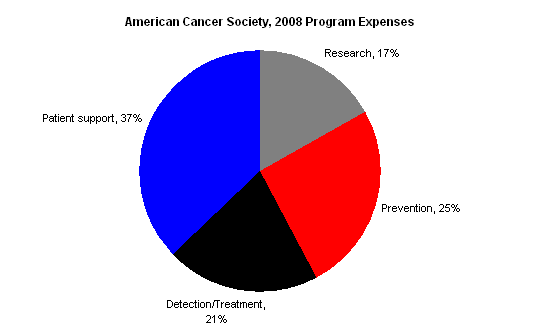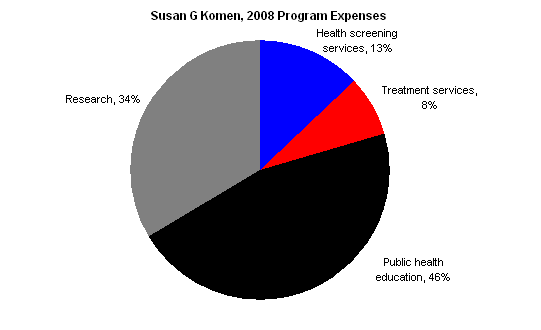This is a guest post from Dario Amodei about how he decided what charity to support for his most recent donation. Dario and GiveWell staff had several in-depth conversations as he worked through his decision, so we invited him to share his thought process here. Note that GiveWell has made minor editing suggestions for this post (though Dario determined the final content).
Before I get into the details of my donation decision, I’d like to first share a bit about myself: I’m a graduate student in physics at Princeton, and am interested, very broadly, in what I can do to make the world a better place. I feel that giving away a significant portion of my income is an important part of that, and since 2006 I’ve been donating to organizations that try to improve life in the developing world. I’ve always tried my best to make my donations as effective as possible, but on my own I was never able to give this task as much attention as it deserved. I happened upon GiveWell in 2008 through a link from an economics blog, and to date it’s been the single most useful resource I’ve found in deciding where to donate. Last year I gave $10,000 through GiveWell’s pledge fund, and ultimately decided to allocate all of this money to Village Reach. Holden and Elie have asked me to share the thought process I went through in making my decision, in the hopes that it might be of use to other donors facing a similar choice.
My focus has always been on developing-world health interventions, because I believe these interventions address some of the world’s most urgent needs in a highly tangible way. Six out of 12 of GiveWell’s recommended charities operate in this area, including some health charities I’ve donated to in the past. Reading GiveWell’s reports on these charities, it quickly became clear to me that the “three-star” organizations — Village Reach (VR) and Stop TB — really do stand out above the others. Though I respect and am impressed by the two star organizations, they all seem to have sizable holes in their case for efficacy: for instance, PIH seems to (completely?) lack data on medical outcomes, and the Global Fund seems to have problems with how to use additional funds (William Easterly also seems to have a strongly negative assessment of it in this diavlog ).
Thus, I decided to focus on VR (which aims to improve operational logistics for child vaccinations) and Stop TB (which provides governments with funds for tuberculosis treatment). Choosing between these very compelling charities proved difficult, but I don’t regret the considerable effort I put into my choice — as I tried to constantly remind myself, this choice should involve every bit as much effort as buying a $10,000 item for myself. I considered three relevant factors —
- Cost-effectiveness
- Execution
- “Incentive effects” (explained more below)
Cost-effectiveness
GiveWell makes explicit cost effectiveness estimates (based in part on those of the Disease Control Priorities report) for both organizations: ~$545 per infant death averted for Village Reach, and ~$150-750 per death averted for Stop TB. These are roughly comparable, but don’t take into account the fact that Stop TB mainly treats adults, while VR mainly treats infants and children. I feel that adults are capable of deeper and more meaningful experiences than are infants, and also deeper connections with other people, so an adult death seems worse to me than an infant death (though both are of course bad). Trying to quantify exactly how much worse is very subjective and can also seem calculating (“how many babies would you kill to save an adult?”), but on a practical level one is forced to make difficult decisions with limited funds, and in my case I’d say that I think an adult death is perhaps 2 or 3 times worse than an infant’s death. Thus, adjusted for my personal values, I’d say that Stop TB is ~2-3 times more cost-effective than VR, though I understand that others may validly disagree with this subjective assessment.
Execution
The second factor, execution, is the one I find most important. By execution I mean all the factors that are assumed to go right in an ideal cost-effectiveness calculation, but could go wrong in practice. I take Murphy’s Law very seriously, and think it’s best to view complex undertakings as going wrong by default, while requiring extremely careful management to go right. This problem is especially severe in charity, where recipients have no direct way of telling donors whether an intervention is working. The situation is worse yet in the developing world, where projects cannot count on the reliable infrastructure and basic social trust we take for granted in the developed world. Given all these problems, what I look for in a charity is a simple and short chain of execution in which relatively few things can go wrong, together with rigorous efforts to close whatever loopholes do exist. As far as I can tell, VR fits these criteria better than any other charity I’ve encountered. Vaccines unquestionably save lives if correctly administered, so it’s generally enough to show that functional vaccines are being correctly delivered and administered. Roughly, the major questions I want answered about a vaccination program are:
(a) are the vaccines actually delivered to health clinics?
(b) do the vaccines remain effective during transport and storage?
(c) once in storage, are the vaccines actually administered, and safely so?
(d) does the program have a clear plan for spending additional money, so that donations actually translate to more vaccines?
(e) are vaccination rates measured to check that the whole chain is working?
I won’t go through the details, which are in GiveWell’s report, but VR makes a systematic effort to address each question. Deliveries are tracked by phone in real-time (e.g. (a)), VR takes an active role in providing power for refrigerators to keep vaccines cold (e.g. (b)), sterilization equipment is provided and stock outs are tracked (which at least suggests successful administration (c)), VR has a clear plan (d) for how to use additional funds, and changes in vaccination rates are measured with controls (e). These steps aren’t perfect – for example, there is apparently no systematic reporting confirming the actual correct administration of vaccines, so step (c) has some room for error — but overall the chain of execution is tighter than any I’ve seen, and the potential holes seem small enough to be manageable.
By contrast, in Stop TB’s case, such a chain (if I could even write it down) would be much longer — Stop TB hands drugs over to governments (involving several layers of administration, differing from country to country) which then must perform all the logistical details VR must perform, plus diagnostics, recurring treatments, and in some cases second-line treatment. There is also the possibility of TB evolving resistance if treatments are not correctly administered. Stop TB’s random inspections, cure rate data, and external auditing seem suggestive of positive results, but my inability to examine in detail a process that I know is quite complex ultimately leaves me very suspicious about efficacy. This isn’t just a matter of Stop TB being a large organization; rather, the problem is that I can’t see the full process of treatment setup and administration, whether applied to one person or a million. Lacking that clear and full view of Stop TB, I have to conclude that VR is the winner on execution.
Incentive effects
Given only VR’s superiority on execution and StopTB’s superiority on cost-effectiveness, I would be about equally inclined to support either, with perhaps a small edge to VR because execution is so critical. However, it’s important to look at the incentive effects of my donation — the money I give out is not just a one-shot intervention, but also a vote on what I want the philanthropic sector to look like in the future. Along these lines, I see three additional advantages to VR, which make it the clear winner in my mind:
- VR’s small size means that funds given to it through GiveWell could greatly change its funding situation (GiveWell seems to have been responsible for a sizable fraction of VR’s total donations last year). What happens to Village Reach could make a notable impression on other charities, which badly need to hear that focusing on efficacy can pay off.
- In my view, incentivizing careful execution is a higher priority right now than incentivizing cost-effectiveness. Cost-effectiveness would be important if there were many good charitable opportunities and not enough money to fund them all. Instead, the current situation seems to be that a lot of programs are probably a waste of money. It thus makes sense, from an incentive point of view, to reward charities that focus maximally on execution — such as VR.
- Logistics and efficiency are extremely important, but don’t make for good headlines. VR should be getting a lot more money than it is, and I want to tell the philanthropic sector that charities can succeed without being flashy.
In addition to all the arguments listed above, there were a number of other factors which I thought about (some of which were raised in GiveWell’s reports and posts) but ultimately had a hard time getting a handle on and so did not give much weight to. I considered too many factors to list them all, but here are a few examples:
- By lowering child mortality, could VR have different effects on population growth than Stop TB? If so, is population growth beneficial or harmful?
- A vaccination or treatment doesn’t only save one person; it also impedes the spread of the disease. Could TB treatment and child vaccinations differ in how much they do this?
- Stop TB treats people who live in less isolated areas and thus have more opportunity to interact with others and indirectly improve their lives. How important is this?
- VR’s logistics ideas could be applied to many health interventions. If VR’s model spreads and proves effective on a wider scale, how large would the overall benefits be?
Any one of these effects could theoretically be important enough to outweigh all my arguments for VR, so this list serves as a reminder that there can never be any guarantees of efficacy, let alone optimality. Uncertainty, however, is simply part of life, and all I can do is go with my best guess, so I decided to give to VR.
I hope (though I cannot be sure) that my donation will save the lives of 20 children (which is what the cost-effectiveness numbers work out to). That’s a truly staggering benefit, and honestly it came at very little cost to myself: I don’t much miss the new car I didn’t buy, and I’ll gladly make the same sacrifice next year in order to donate again. What did feel very emotionally taxing was reading (and in most cases, agreeing with) all the negative analysis of charities at GiveWell and elsewhere. I found it difficult to evaluate everything in a critical fashion while still holding on to the compassion and optimism that originally inspired me to donate. It’s tough to find the right balance between caring and hard-nosed realism, but it is possible, and it is, as far as I know, the only way to truly change the world.


